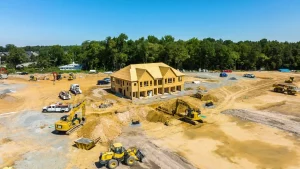Community-driven renovations uplift neighborhoods and foster unity, yet often face financial hurdles. Securing funding proves daunting, especially for collaborative endeavors. By pooling resources, these projects can conquer financial barriers and nurture vibrant communities. Exploring the intricacies of community-engaged remodeling endeavors, we delve into the significance of community involvement, funding avenues, and tactics to tackle budget constraints – unveiling the keys to prosperous and enduring community advancement.
Key Takeaways
- Community-engaged remodeling projects rely heavily on external funding, making securing sufficient financial resources a significant challenge.
- Active community engagement is crucial for building trust, ensuring community needs are met, and contributing to long-term project success.
- Grants, crowdfunding, and partnerships are viable funding options that can empower projects and bring stakeholders’ goals to fruition.
- Collaborative efforts and resource sharing can help maximize the impact of available funds, overcome budget constraints, and optimize budgets.
- A thorough understanding of stakeholder relationships, funding sources, and timelines is essential for navigating financial hurdles and guaranteeing successful project execution.
Financial Challenges in Remodeling
As community-involved remodeling projects often rely on external funding and support, securing sufficient financial resources can be a significant hurdle, leading to financial challenges in remodeling. Community-engaged remodeling projects, in particular, face unique financial obstacles, such as limited budgets, unpredictable funding streams, and resource constraints, which can hinder project timelines and overall success.
Importance of Community Engagement
Through active community engagement, remodeling projects can nurture a sense of ownership and responsibility among stakeholders, ultimately contributing to the project’s long-term success and sustainability. This engagement cultivates trust, builds relationships, and guarantees that community needs are met, resulting in a more interconnected and thriving community.
Funding Options for Remodeling Projects
Securing sufficient funding is an essential step in transforming a community-engaged remodeling project from vision to reality, as it empowers the allocation of resources necessary to bring stakeholders’ collective goals to fruition. Community-engaged remodeling projects can investigate funding options such as grants, crowdfunding, and partnerships with local organizations to secure the necessary financial support.
Overcoming Budget Constraints Together
Through collaborative efforts, community engaged remodeling projects can overcome budget constraints by utilizing the collective strengths and resources of stakeholders to maximize the impact of available funds. By sharing knowledge, expertise, and resources, stakeholders can identify cost-saving opportunities, optimize budgets, and guarantee the successful implementation of community-engaged remodeling projects.
Navigating Financial Hurdles Successfully
Effectively managing financial hurdles in community-engaged remodeling Contracts requires a thorough understanding of the intricate relationships between stakeholders, funding sources, and project timelines. By identifying potential financial pitfalls and developing contingency plans, project leaders can reduce risks and guarantee the successful execution of community-engaged remodeling contracts that benefit the community and nurture a sense of belonging.
Frequently Asked Questions
How Can Local Businesses Support Community Engaged Remodeling Projects Financially?
Local businesses can support community engaged remodeling projects financially by providing sponsorship, grants, or in-kind donations, nurturing strong community ties, and enhancing their reputation as responsible corporate citizens.
What Role Do Community Members Play in Project Decision-Making Processes?
In community-engaged remodeling projects, community members play a crucial role in project decision-making processes, contributing valuable insights, setting project goals, and ensuring that remodels align with community needs and values, nurturing a sense of ownership and inclusivity.
Can Government Grants Be Used for Community-Engaged Remodeling Projects?
Government grants can be a viable funding option for community-engaged remodeling projects, as they often support initiatives that benefit local communities, promote social cohesion, and improve public spaces, making them a suitable match for such projects.
How Do Community Engaged Remodeling Projects Benefit Local Economic Growth?
Local economic growth is stimulated by community-involved remodeling projects as they create jobs, boost local spending, and improve property values, ultimately attracting new businesses and residents to the area.
Can Volunteers Be Used to Reduce Labor Costs for Remodeling Projects?
Volunteers can significantly reduce labor costs for remodeling projects by contributing skilled and unskilled labor, allowing project managers to allocate budget resources more efficiently, and cultivating a sense of community ownership and engagement.
Conclusion
In summary, community-engaged remodeling projects necessitate collaborative financial strategies to overcome budget constraints. By harnessing collective strengths and resources, these initiatives optimize budgets, maximize impact, and cultivate a sense of ownership and trust among stakeholders. Through grants, crowdfunding, and partnerships, financial hurdles can be navigated successfully, ultimately transforming spaces and cultivating thriving communities. Effective financial planning and community engagement are essential in ensuring the long-term sustainability and success of these projects.
Also read: Mobility Equipment Enhance Home Independence






